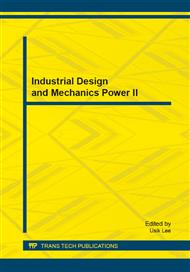p.267
p.271
p.275
p.281
p.286
p.290
p.296
p.301
p.306
Investigation on Similar Law of Drag Reduction Performance of Supersonic Vehicle Induced by Laser Energy
Abstract:
Wave drag is high when vehicle flights in supersonic, which impacts on aerodynamic performance of the vehicle heavily, so how to reduce wave drag becomes an important problem which needs to be solved. As an active-controlling technology on flow, drag reduction by laser energy deposition has been paid more and more attention to by researchers. Based on Euler equations, mechanical model and numerical method of drag reduction induced by laser plasma are established. Effect on drag reduction performance of hemispherical blunt body of laser energy, blunt size, temperature and pressure of surrounding gas is studied. A dimensionless energy factor is extracted according to numerical results. Results indicate: drag reduction percentage increases with dimensionless energy factors increasing when dimensionless energy factor is less than 0.7; when dimensionless energy factor is greater than 0.7, energy will reach saturation, and drag reduction percentage keeps constant approximately; power efficiency decreases with dimensionless energy factors increasing. Therefore, similar law of drag reduction performance by laser plasma is obtained preliminarily, which provides possibility for reliable amplification of drag reduction by laser energy deposition.
Info:
Periodical:
Pages:
286-289
Citation:
Online since:
October 2013
Authors:
Price:
Сopyright:
© 2013 Trans Tech Publications Ltd. All Rights Reserved
Share:
Citation:


